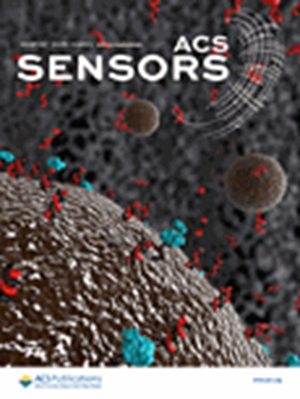Real-Time Gas Identification at Room Temperature Using UV-Modulated Sb-Doped SnO2 Sensors via Machine Learning.
IF 9.1
1区 化学
Q1 CHEMISTRY, ANALYTICAL
引用次数: 0
Abstract
This study presents a novel approach for real-time gas identification at room temperature. We use UV-modulated Sb-doped SnO2 sensors combined with machine learning. Our method exclusively employs the gas response (R) as the sole metric. This eliminates the need for time-dependent parameters such as response and recovery times. By modulating the UV light intensity at five distinct levels (5, 10, 15, 20, and 30 mW/cm2), we generate a five-dimensional optical fingerprint. This fingerprint captures subtle variations in sensor response under different illumination conditions. Gas discrimination was evaluated for both oxidizing gases (O3 and NO2) and reducing gases (NH3 and H2). Our machine learning results show that Support Vector Machine (SVM) and K-Nearest Neighbors (KNN) achieve nearly 100% accuracy when four UV intensity levels are used. Using R as the sole input metric allows for instantaneous response detection, which is essential for real-time gas identification. This approach addresses the limitations of conventional thermally activated sensors that require multiple parameters and paves the way for the development of rapid-response monitoring systems.基于机器学习的紫外调制sb掺杂SnO2传感器在室温下的实时气体识别。
本研究提出了一种在室温下实时气体识别的新方法。我们使用uv调制sb掺杂SnO2传感器与机器学习相结合。我们的方法专门采用气体响应(R)作为唯一的度量。这消除了对时间相关参数(如响应和恢复时间)的需求。通过在五个不同的水平(5、10、15、20和30 mW/cm2)调制紫外线强度,我们产生了一个五维光学指纹。这种指纹捕捉到在不同光照条件下传感器响应的细微变化。对氧化性气体(O3和NO2)和还原性气体(NH3和H2)进行了气体判别。我们的机器学习结果表明,当使用四种紫外线强度水平时,支持向量机(SVM)和k近邻(KNN)的准确率接近100%。使用R作为唯一的输入指标可以实现瞬时响应检测,这对于实时气体识别至关重要。这种方法解决了传统热激活传感器需要多个参数的局限性,为快速响应监测系统的发展铺平了道路。
本文章由计算机程序翻译,如有差异,请以英文原文为准。
求助全文
约1分钟内获得全文
求助全文
来源期刊

ACS Sensors
Chemical Engineering-Bioengineering
CiteScore
14.50
自引率
3.40%
发文量
372
期刊介绍:
ACS Sensors is a peer-reviewed research journal that focuses on the dissemination of new and original knowledge in the field of sensor science, particularly those that selectively sense chemical or biological species or processes. The journal covers a broad range of topics, including but not limited to biosensors, chemical sensors, gas sensors, intracellular sensors, single molecule sensors, cell chips, and microfluidic devices. It aims to publish articles that address conceptual advances in sensing technology applicable to various types of analytes or application papers that report on the use of existing sensing concepts in new ways or for new analytes.
 求助内容:
求助内容: 应助结果提醒方式:
应助结果提醒方式:


